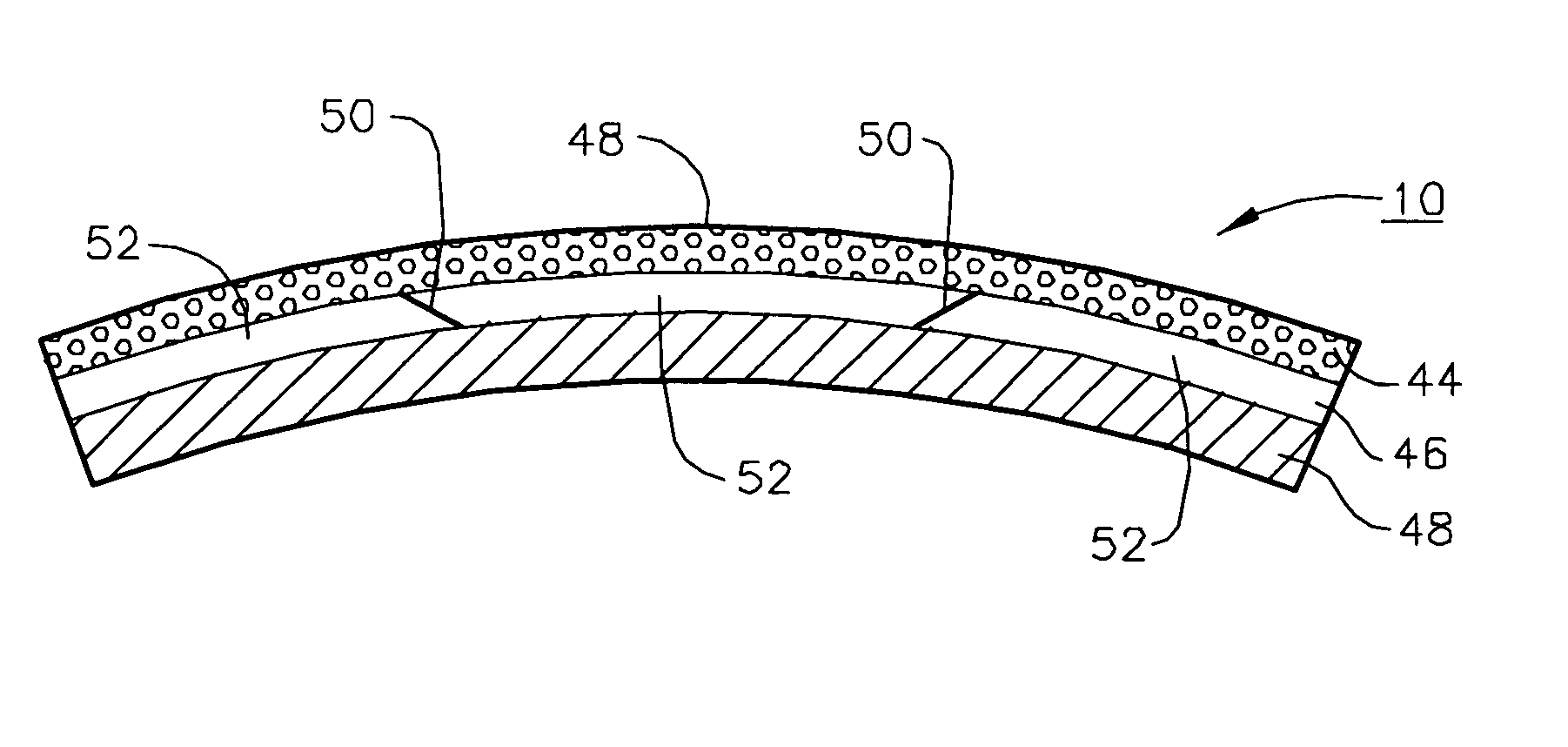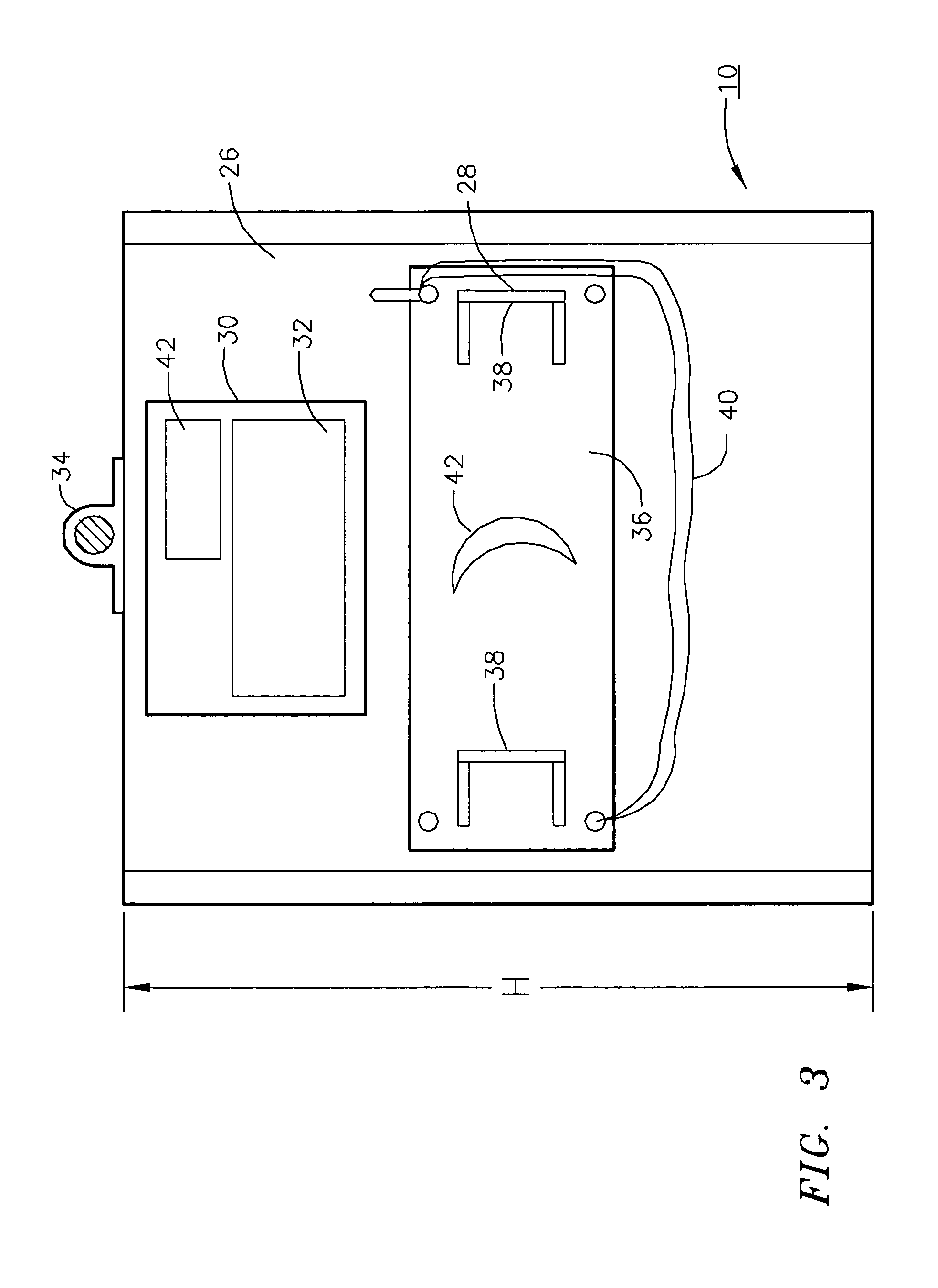Ballistic shield
- Summary
- Abstract
- Description
- Claims
- Application Information
AI Technical Summary
Benefits of technology
Problems solved by technology
Method used
Image
Examples
example 1
[0035]Spectra Shield® was purchased from Honeywell (101 Columbia Road, Morristown, N.J. 07962). Kevlar®, and Twaron® fabrics were purchased from Barrday, Inc. (75 Moorefield St., P.O. Box 790, Cambridge, ON N1R 5W6) and Hexcel Schwebel (2200 South Murray Ave., Anderson, S.C.). To fabricate the support structure with the single curvature as shown in FIGS. 1 and 4 we machined a closed mold from aluminum alloy. With a radius of curvature of 20-in and a projected width of 20-in the length of the curve is about 21-in. The height of the mold is 34-in. We first cut 28 layers of Spectra Shield and placed them into the mold. After closing the mold we heated the mold platens of a hydraulic press top to a temperature of between 120 and 150° C. and soaked for 10 to 60-min. The mold was then cooled down to a temperature somewhat below the molding point. The sample was removed from the mold. It has become a well-consolidated structure with a single curvature with a radius of curvature of 20-in. W...
example 2
[0036]A Xydar® (LCP) foam block was manufactured according to the process described in a co-pending U.S. patent application Ser. No. 11 / 807,488. It was sliced into thin sheets between 0.125 and 0.25-in thick.
[0037]Silicon carbide tiles were purchased from CoorsTek (600 9th Street, P.O. Box 4025, Golden, Colo. 80401). Three pieces of SiC tiles were manufactured to make up the sizes (20-in projected width and 34-in height) and shape (radius of curvature of 20-in) as shown in FIGS. 1 and 4.
[0038]Using a Spectra Shield® support structure molded as described in EXAMPLE 1 we bonded the SiC tiles and the support structure with a room temperature cured adhesive. It was a Loctite® 60-min cure adhesive produced by Henkel Corporation was used for bonding. After 60-min or longer of cure time the SiC tiles and the Spectra Shield support structure became an integrated structure. The thin sheet of Xydar® foam mentioned above was then bonded to this structure using a sprayed adhesive manufactured b...
example 3
[0039]Two to eight holes were drilled along both sides of the support structure, prepared as described above, before it was bonded to the foam and ceramic plates. The holes were located near the center along the side of the shield. This allows the shield carrying plate 36 to be fastened at various locations and enable the user to conveniently cover the vital areas of his / her body according to his / her height. Tee nuts were installed at these holes. The shield carrying plate 36 is fastened to the shield using bolts through these holes with T nuts. This design does not create any holes in the hard layer and therefore eliminates all the weaknesses due to window and fastening that occur in the conventional ballistic shields.
PUM
| Property | Measurement | Unit |
|---|---|---|
| Temperature | aaaaa | aaaaa |
| Temperature | aaaaa | aaaaa |
| Temperature | aaaaa | aaaaa |
Abstract
Description
Claims
Application Information
 Login to View More
Login to View More - R&D
- Intellectual Property
- Life Sciences
- Materials
- Tech Scout
- Unparalleled Data Quality
- Higher Quality Content
- 60% Fewer Hallucinations
Browse by: Latest US Patents, China's latest patents, Technical Efficacy Thesaurus, Application Domain, Technology Topic, Popular Technical Reports.
© 2025 PatSnap. All rights reserved.Legal|Privacy policy|Modern Slavery Act Transparency Statement|Sitemap|About US| Contact US: help@patsnap.com



